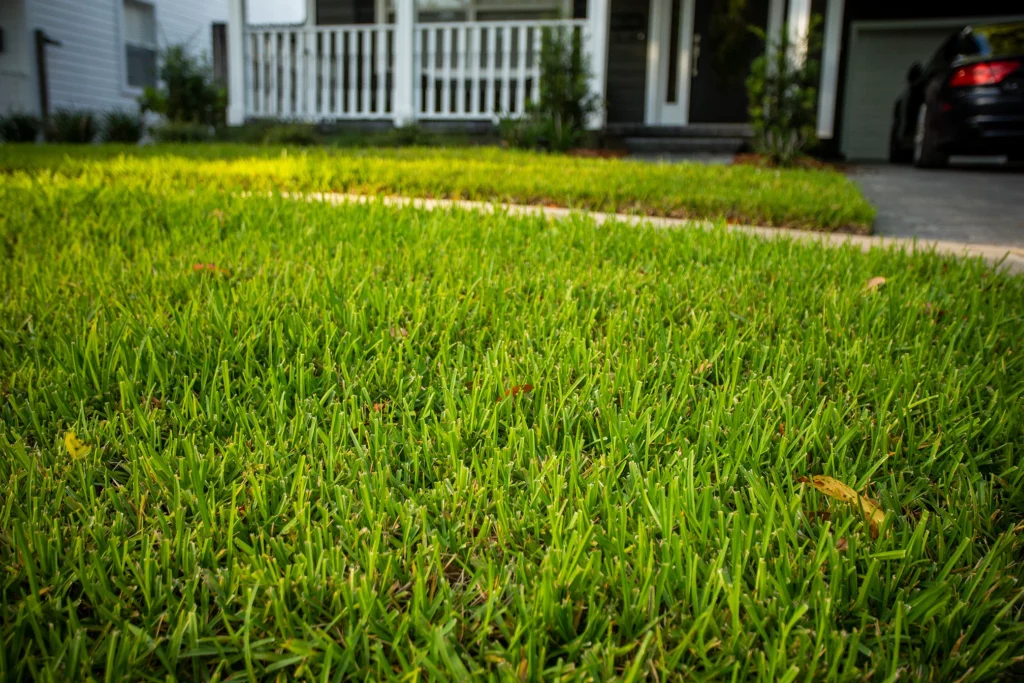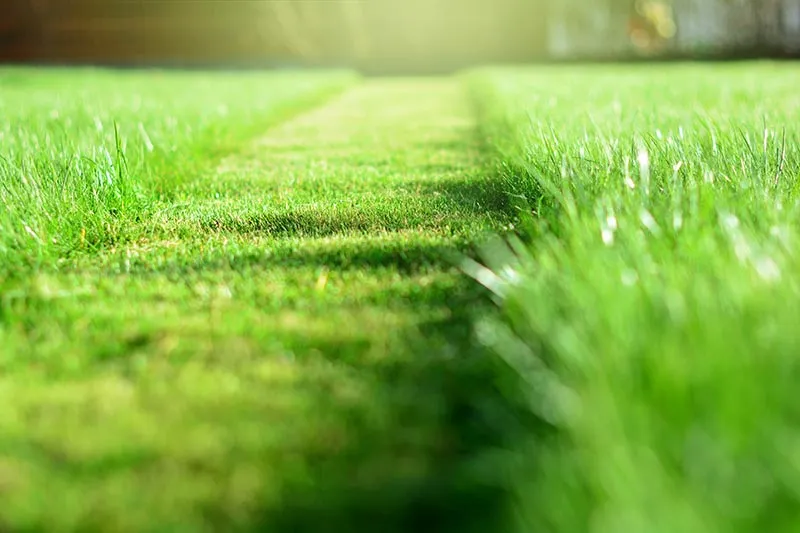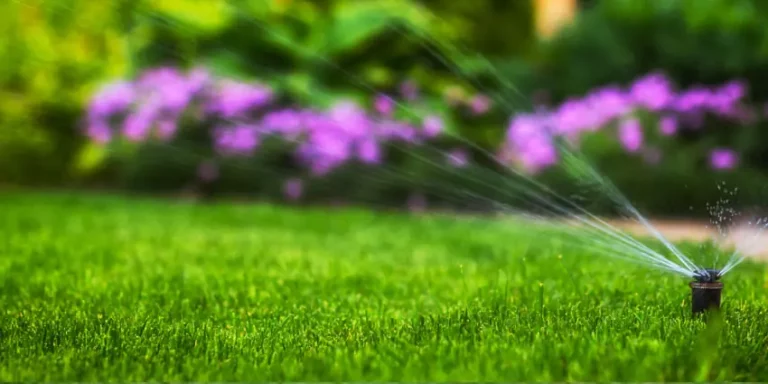Stepping onto a freshly laid expanse of new turf might seem like a simple action, but this deceptively trivial act is laden with complexities that can be profound.
Further, there may be different reasons, some of which are frequent like Root issues, soil, damage, disease, stress, slow growth, uneven appearance, long-term impact, and overall health
However, New turf, whether it’s a pristine lawn or a sports field, demands a delicate period of establishment that involves intricate biological and environmental processes.
Here, you can learn about every one of the causes and essential maintenance for turf.
What are the Characteristics of New Turf?

First, New turf, which is characterized by young and tender grass in its early stages of growth, possesses a limited root system, making it susceptible to stressors like foot traffic, drought, heat, cold, pests, and diseases.
Moreover, through proper care and maintenance, turf can quickly establish itself and gradually become more resilient over time. During the root establishment period and adaptation phase, it is crucial to provide attentive nurturing to ensure successful growth.
Also, the timeframe for full establishment varies based on several factors, such as grass type, climate, soil conditions, and care practices. Generally, this process takes several weeks to a few months. Despite its vulnerability, turf can blend seamlessly into the existing lawn if given the careful attention it requires for healthy integration.
Top causes why you should avoid walking on new turf
1. Insufficient Root Establishment: New turf has a limited and fragile root system that takes time to establish itself in the soil. Walking on it too soon can disrupt the process of growth and development, making it harder for the grass to anchor itself securely.
2. Soil Compression and Air Pockets: Walking on turf compacts the soil, reducing the pore spaces necessary for the formation of origin and water infiltration. Additionally, air pockets are produced by compacted soil, which results in an uneven surface and makes it challenging for roots to reach nutrients.
3. Damage to Delicate Blades: The blades of grass are young, tender, and more susceptible to damage. So, it can cause bruising or breaking of these delicate blades, impairing the grass’s ability to photosynthesize and progress.
4. Nutrient and Water Uptake: The ability of fresh turf to take nourishment and water from the soil is limited by its shallow structure. In the same way, Walking on it causes the soil to become compacted, which makes it more difficult for the grass to reach vital resources
5. Risk of Stress and Disease: The stress inflicted by foot traffic weakens the grass, making it more susceptible to diseases and pests. Damaged blades and roots provide entry points for pathogens that can further harm the turf.
6. Slow Growth and Recovery: Moving on freshly laid grass inhibits its recovery and progress, needing extra energy to repair wear and tear.
7. Uneven Aesthetic: May have weak or damaged patches from foot usage, which will reduce the aesthetic appeal of the lawn.
8. Extended Establishment Period: Affecting lawn resilience and lushness.
9. Long-Term Impact: The effects may have an impact on the health, toughness, and capacity of the lawn to endure for a long time.
Consequences of Walking on New Turf:
New turf can suffer negative effects on its health and growth when walked on. Foot movement compacts the soil, preventing the establishment of roots, which stunts growth and makes plants more susceptible to pests and diseases.
Therefore, Uneven patches, poor drainage, and increased weed susceptibility are other effects. The extended recuperation time and increased care needs may have a long-term effect on the resilience and health of the turf. In order to ensure the creation of new grass, it makes sense that people stay away from walking on it.
Proper Care and Transitioning

The following guidelines will help you take good care of your new grass and make the transition easy:
1. Patience is Key: Understand that turf requires time to establish itself. Be patient and avoid rushing the process.
2. Minimize Foot Traffic:
Restriction on walking
Consider creating temporary walkways or designated paths to direct traffic away from newly laid areas.
3. Watering:
Keep consistently moist to facilitate root growth. The top inch of soil should feel damp.
Water in the early morning or late afternoon to reduce water loss due to evaporation.
Avoid overwatering, as it can lead to waterlogging and other issues.
4. Fertilization:
Follow recommended fertilization schedules for the specific type of grass.
Use a balanced, slow-release fertilizer that promotes development without causing excessive top progress.
5. Mowing:
Use a sharp mower blade to prevent tearing or damaging the delicate grass blades.
6. Gradual Transition:
Wait until the grass has grown to a sufficient height and shows signs of healthy growth.
7. Overseeding and Repair:
Keep a close eye on any areas that might show signs of stress, thinning, or damage.
On the other hand, Consider overseeding these areas to promote thicker grass coverage and faster recovery.
8. Adequate Air Circulation:
Promote good air circulation to prevent the development of fungal diseases. Avoid excessive shade or crowding of plants.
9. Monitor and Adjust:
Regularly monitor the growth, health, and overall condition.
Adjust your care regimen based on weather conditions, soil moisture, and the grass’s response.
10. Educate Others:
If you have family members, children, or pets, educate them about the importance of avoiding the place during its establishment phase.
12. Professional Advice:
Consult with nearby lawn care specialists or horticultural experts for advice whenever you’re unsure of the maintenance requirements for your particular type of grass.
FAQ
What’s the time difference for seed vs turf?
Water newly laid turf every day for two to four weeks after it has been laid, making sure the water seeps into the soil underneath it, for optimal results.
When can I USE my New Lawn?
Determine the purpose of laying a lawn by the grass’s condition, as perfect conditions in April in Cornwall yield faster grass seed or turf than Aberdeen sown.
Can you walk on new turf?
No, The recommended time frame is usually approximately 3 weeks before you can walk on newly laid turf
How long do you water new turf?
Water newly laid turf every day for two to four weeks after it has been laid, making sure the water seeps into the soil underneath it, for optimal results.
Does turf fade in the sun?
Yes, While sunlight can fade other types of fabric, the materials used in artificial turf are not affected similarly.
Can I let my pets walk on new turf?
No, Just like humans, pets should avoid walking on new turf until 5.Q5: Are there any alternatives to walking on new turf?
Conclusion
Walking on new turf during this crucial establishment period can disrupt this process, leading to soil compaction, root damage, and reduced water and nutrient absorption.
Apart from When working with new turf, patience, and adequate care are essential. To ensure its health and durability, give it the time it needs to establish itself before exposing it to foot traffic. We help to create a lush, resilient lawn that improves the landscape while encouraging sustainable growth and long-term beauty by refraining from walking on new turf during its early growth period.

